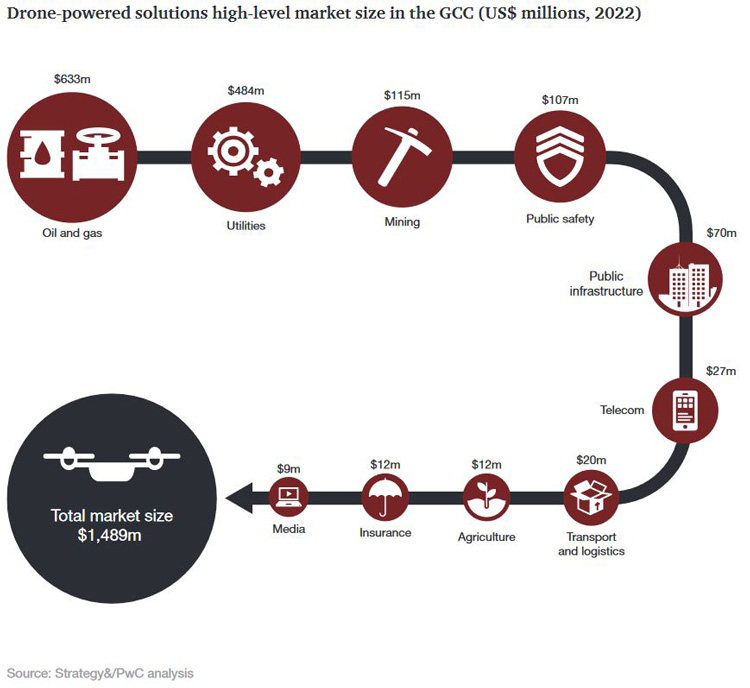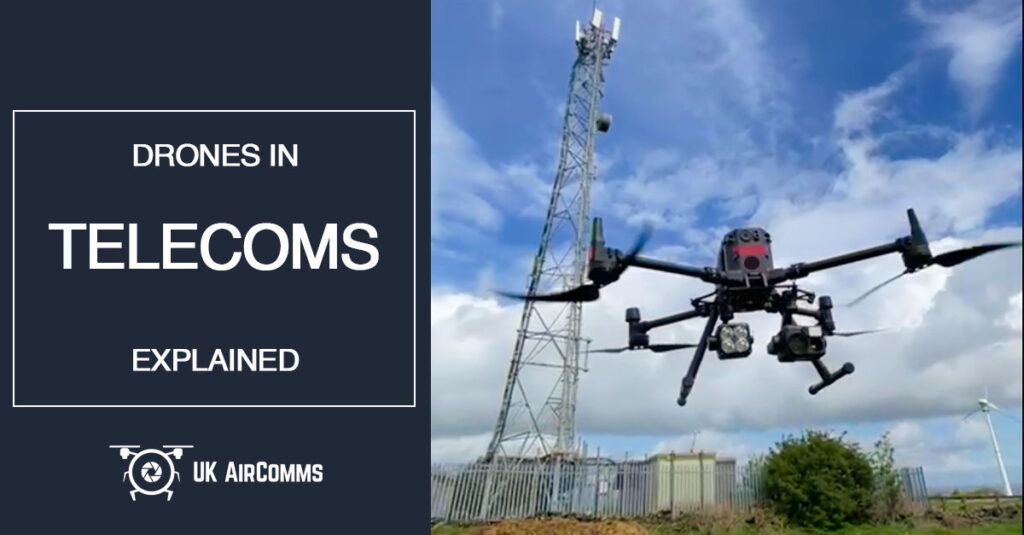Introduction
Since 2015, UK AirComms have been helping to pioneer this brand-new industry within the telecommunications industry. Digital Twins are fast becoming the industry standard way of carrying out Remote Multi-Skilled Site Visits and Asset Inventory & Management.
There are now in-depth studies being carried out to assess just how useful drone technology, coupled with data processing platforms, can be used to improve efficiencies and safety within the industry.
In this article, we’ve picked out the “takeaways” from these studies to provide you with a snapshot of where the Digital Twin industry is at.
Existing Drone-Powered Commercial Applications
Currently, drones are being used at scale to provide the following services to telecoms companies throughout the world:
- Surveying and Mapping – Providing measurable and photogrammetrical visualizations to enhance stakeholders’ awareness about the sites surrounding their assets.
- Investment Supervision – High-definition aerial imagery and Digital Twins help stakeholders monitor work progress, asset condition, compliance, and health & safety.
- Asset Inventory Management – UK AirComms provide a service whereby we can capture a digital twin of a site and compare the legacy information held by the operator with what we can physically see on the site.
- Line of Sight Testing – Say goodbye to cherrypickers! Through the use of specialized LED lighting and the latest camera technology with incredible zoom capabilities, we are able to test the Line of Sight for existing and planned telecoms towers over great distances. So… no more need for “Working at Height”!
- Delivery of Goods – Already in use in some countries by Amazon and UPS.
- Surveillance – Typical uses of this service could be security, emergency operations and traffic management.
- Videography and Photography – The media industry was probably the first to have used drones commercially.
It is evident that the use of drone technology in telecoms is still in its infancy. However, we are seeing a huge increase year on year in the demand for our services and there is still potential for it to grow even further, especially in the UK.
Below, you can see the market size of drone-related services by industry sector.

In 2021, it is estimated that 55,000 Small Unmanned Aircraft System (UAS) flights were conducted for commercial purposes within telecommunications alone! The majority of these flights were carried out to capture 2D image data in order to create interactive 3D models (Digital Twins).
The Future of Drone-Powered Solutions in Telecoms
As identified in a report published by Strategy&, telecommunications operators are in an extremely favourable position to capitalize on drone technology.
Although the acquisition of data alone is a relatively unsophisticated task, the crucial elements of DPS (Drone-Powered Solutions) are data transfer, storage, and processing and analytics — precisely the specific capabilities telecom operators possess.
Source: Strategy&
Telecom operators, with their extensive tower networks that provide the necessary connectivity for live streaming, drone tracking, and information exchange, can be in a position to monopalise the industry. Verizon Robotics has already recognised this by buying out Skyward, a drone company, and uses its existing celltower coverage, cloud storage and data processing capabilities to offer a whole plethora of innovative (and very profitable!) services.
We all know that it is only a matter of time before we start seeing drones buzzing overhead on a regular basis – whether they be for surveilance, movement of goods or even personal transport! The infrastructure required to make this a reality will start and end with a solid mobile network and ability to process massive data – services already provided for by operators.
The question is, how many of us will be in the best position to capitalise on this opportunity?
In a study by Grand View Research Inc. in 2020, they estimated that by 2025, the market for small drone operations in telecoms will be worth US$84 Billion. It also highlights the potential services that telecoms operators could provide using DPBS (Drone-Powered Business Solutions):
- Drone procurement
- Data delivery
- Data processing
- End-to-end commercial drone services
- On-demand live video data acquisition
- Fully autonomous system operated at a client’s premises

References
Sam McGuire, Jake Lahmann, Robert McCoy, (2023) “Drone Mappings in the Telecommunications Industry”. Retrieved from https://natehome.com/blog/2023/02/13/nate-releases-drone-mappings-in-the-telecommunications-industry-whitepaper/
Ramzi Khoury, David Abi Diwan, Jad Hajj, Michał Mazur, Adam Wiśniewski, Agnieszka Babicz, (2022) “Telecom operators in the age of drones. Preparing for the new era”. Retrieved from https://www.strategyand.pwc.com/m1/en/reports/telecom-operators-in-the-age-of-drones.pdf

